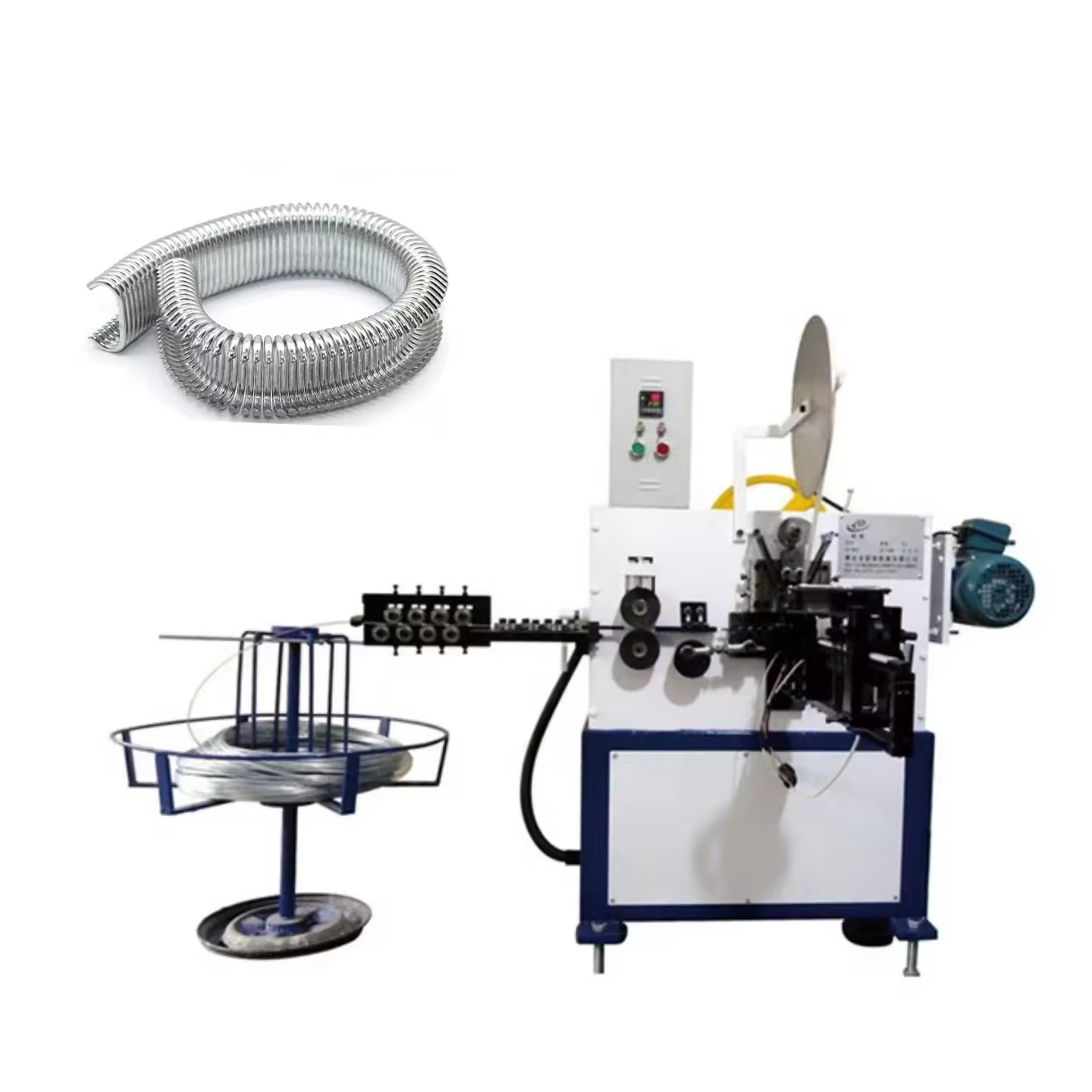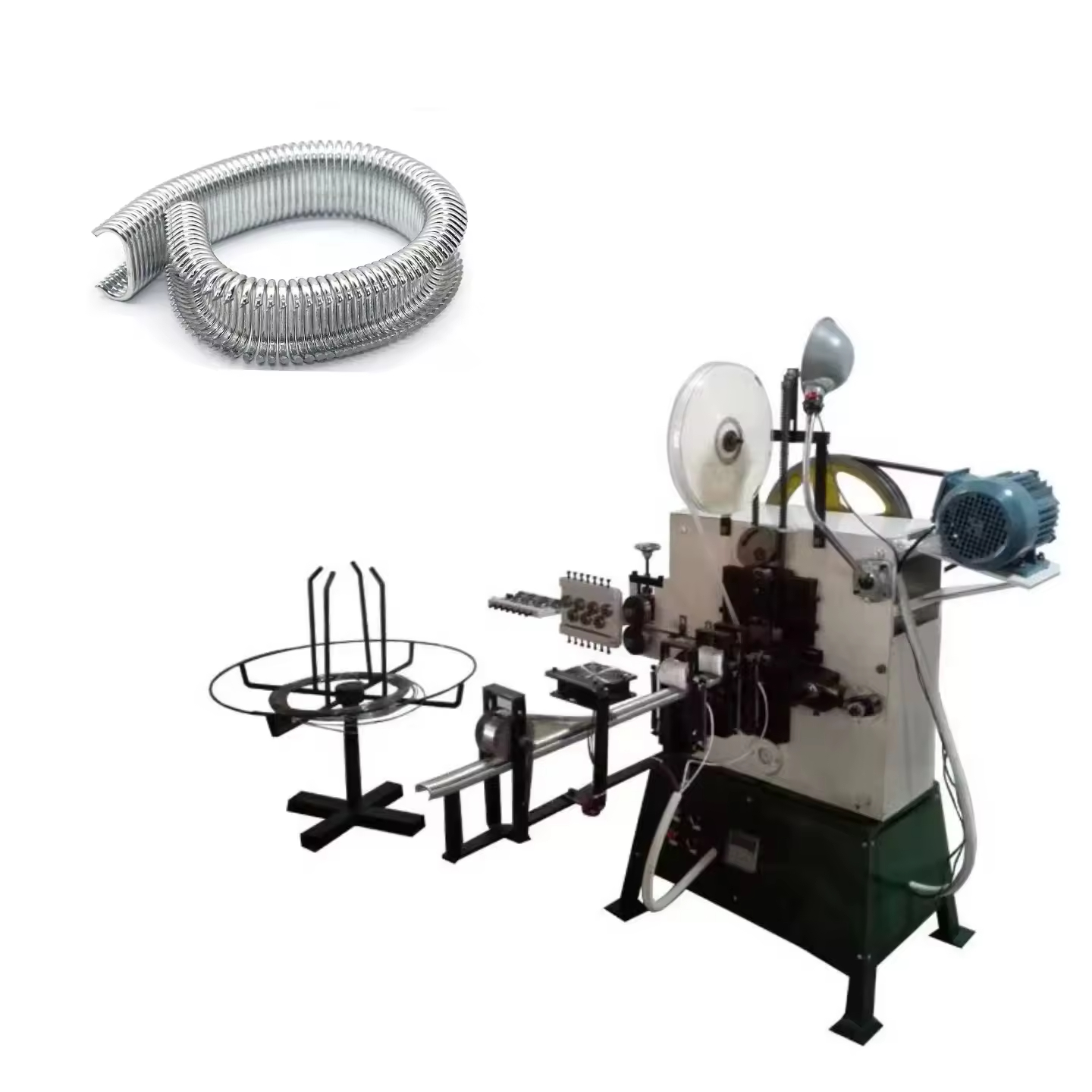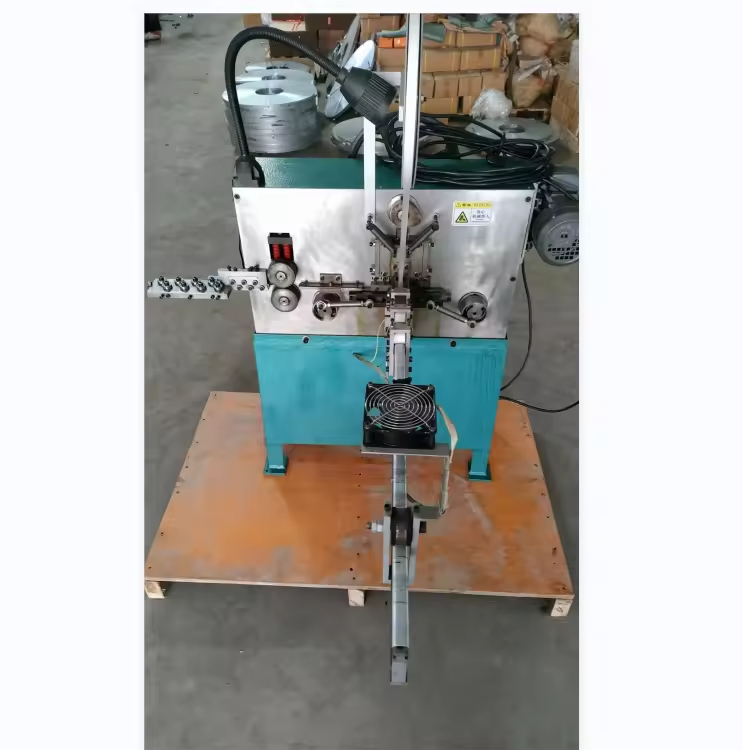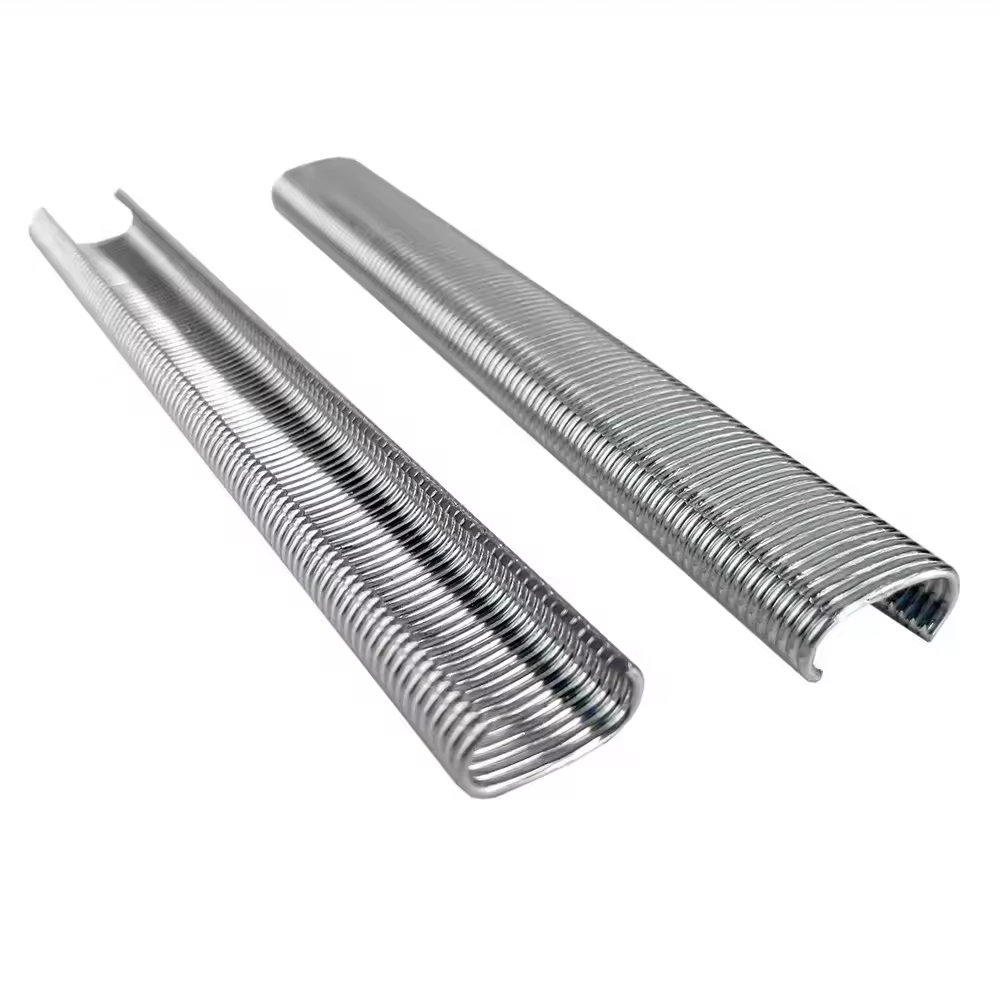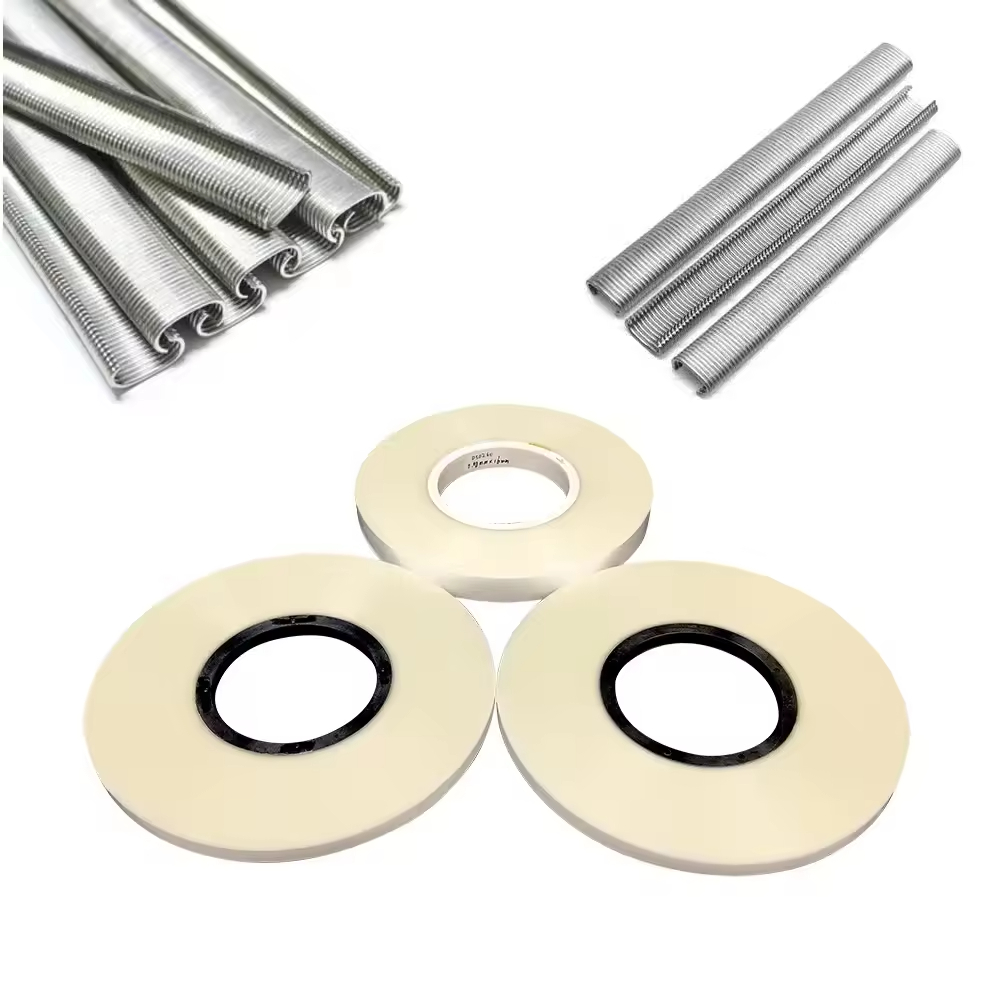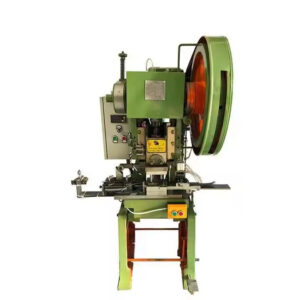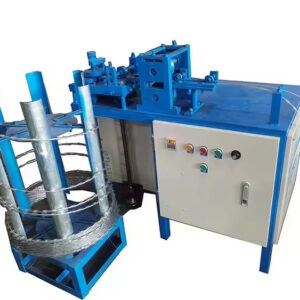Description
What Is the C12 C17 C24 C45 C Ring Type Hog Ring Staple Making Machine?
The C Ring Type Hog Ring Staple Making Machine is a high-speed, automated device that forms C-type rings or hog rings from wire. These metal rings are used in many industries for fastening, binding, and sealing. The machine feeds raw wire, bends it into a C-shape, cuts it to length, and ejects the finished clip—all in one motion.
This staple making machine increases efficiency by automating a process that otherwise requires multiple tools and manual labor.
Core Applications of the C12 C17 C24 C45 Hog Ring Staple Making Machine
This machine is widely used in industries that rely on hog rings or C rings for fastening or joining materials. Its main applications include:
-
Mattress Manufacturing: Fastens mattress spring coils or frames.
-
Cage & Wire Mesh Production: Secures welded mesh or animal cages.
-
Fencing & Gabion Boxes: Closes ends or secures wire meshes.
-
Auto Seating & Upholstery: Joins foam, fabric, or seat frames.
-
Bag Closure & Packaging: Seals large sacks and packaging bags.
-
Furniture Industry: Attaches fabric, foam, or mesh in seating and bedding.
The C12 C17 C24 C45 model offers high consistency, making it suitable for large-scale production across various industries.
Top Benefits of Using a C Ring Staple Making Machine
-
Faster Production Rates
This staple making machine operates at high speeds with minimal downtime, helping businesses meet large-volume demands. -
Reduced Labor Costs
Automating staple formation cuts reliance on manual tools and labor, saving time and overhead costs. -
Consistent Ring Shape & Size
Accurate bending and cutting systems produce uniform C-rings, improving end-product quality. -
Simple Wire Feeding System
The machine supports various wire types including galvanized and stainless steel, increasing flexibility for different product requirements. -
Long-Term Cost Savings
Its sturdy frame and low-maintenance design offer reliable performance with fewer breakdowns.
Use Cases for the C Ring Staple Making Machine in Production Lines
The C Ring Staple Making Machine plays a vital role in continuous production. Below are typical use cases:
-
Mattress Manufacturing Lines: Automates clip production for springs and frames.
-
Agricultural Wire Cage Producers: Makes C-rings to assemble poultry cages and baskets.
-
Fencing Manufacturers: Supplies hog rings for securing mesh fencing or spiral wires.
-
Auto Interior Factories: Produces staples used in car seat upholstery and foam insulation.
-
Industrial Bag Closure Operations: Seals heavy-duty bags quickly and tightly.
These use cases highlight the versatility of the C12 C17 C24 C45 model across different industrial tasks.
Key Features of the C Ring Type Staple Making Machine
-
Wire Diameter Compatibility: Supports 1.6–2.4mm wire (varies by model)
-
Speed Range: Up to 80–100 pieces per minute
-
Adjustable Ring Sizes: C12 C17 C24 C45 rings with options for width and diameter
-
Motor Power: Energy-efficient design with high output
-
Control Panel: Easy-to-use interface with emergency stop features
This staple making machine combines smart features with a practical design to fit right into any manufacturing line.
How to Choose the Right Staple Making Machine for Your Operation
When selecting a staple machine like the C12 C17 C24 C45 model, consider these factors:
| Factor | What to Check |
|---|---|
| Output Volume | Does it match your daily clip demand? |
| Wire Type | Can it process the material you use? |
| Ring Shape | Does it meet your end-product requirements? |
| Power Supply | Compatible with your factory voltage? |
| Maintenance Support | Are spare parts and support available? |
By answering these questions, you’ll reduce risk and get better returns on your investment.
Troubleshooting Common Issues in Staple Production
Here are some quick solutions to frequent problems:
-
Inconsistent Ring Size: Adjust feed roller tension.
-
Wire Feed Slipping: Clean the roller track and check alignment.
-
Jammed Blades: Replace worn cutters and apply lubrication.
-
Overheating Motor: Check ventilation and duty cycles.
Routine inspection and minor adjustments can prevent major downtime.
Tips for Maintenance and Longevity
To extend the life of your Staple Making Machine:
-
Clean moving parts daily.
-
Use wire within the recommended diameter range.
-
Follow a weekly lubrication schedule.
-
Replace consumables (cutters, springs) on time.
-
Keep the electrical system free from dust.
Preventive care will keep your production running smoothly for years.

